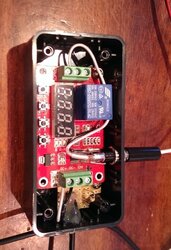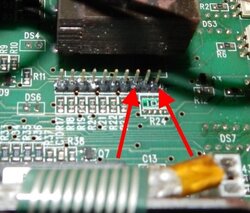After reading all of the internet and not finding what I needed, I managed to figure it out. All I wanted was to have the stove turn on before I get home from work.
I built this:

Main timer circuit from Amazon: http://www.amazon.com/dp/B00IP5LMJA/ref=sr_ph?ie=UTF8&qid=1421619710&sr=1&keywords=relay+timer
The hard part was wiring it up to the control panel (pu-cb04). From the right, it needs to be wired to the first and third pins under the ribbon cable. These pins are connected when the ON button is pressed.

This timer will "push the ON button" after a set amount of time. I wish there was a terminal for the one button; would've been so much easier.
I built this:

Main timer circuit from Amazon: http://www.amazon.com/dp/B00IP5LMJA/ref=sr_ph?ie=UTF8&qid=1421619710&sr=1&keywords=relay+timer
The hard part was wiring it up to the control panel (pu-cb04). From the right, it needs to be wired to the first and third pins under the ribbon cable. These pins are connected when the ON button is pressed.

This timer will "push the ON button" after a set amount of time. I wish there was a terminal for the one button; would've been so much easier.


 .
.